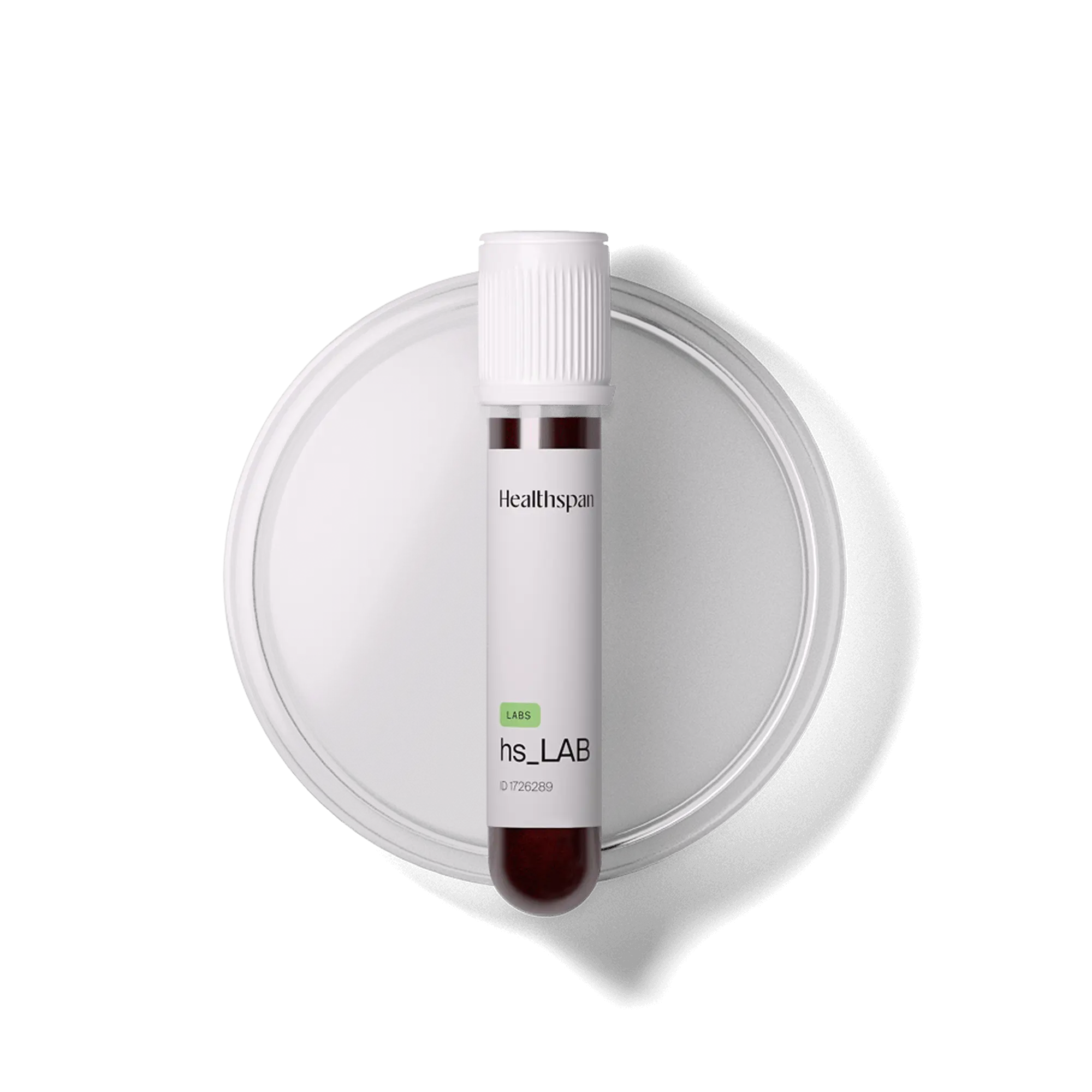To see results, you need to see your results
Healthspan's advanced lab panels provide precise data on 100+ biomarkers. Your dedicated clinical care team analyzes and explains the results in plain terms, helping you personalize and optimize your longevity protocol.
total care
A full-service approach to your long-term health

(Types of tests)
WBC (White Cell Count)
RBC (Red Cell Count)
Hemoglobin
Hematocrit
MCV (Mean Corpuscular Volume)
MCH (Mean Corpuscular Hemoglobin)
MCHC (Mean Crp Hgb Concentration)
RDW (Red Cell Distribution Width)
Platelets
Neutrophils
Lymphocytes
Monocytes
Eosinophils
Basophils
Absolute Neutrophils
Absolute Lymphocytes
Absolute Monocytes
Absolute Eosinophils
Absolute Basophils
Immature Granulocytes
Absolute Immature Granulocytes
Glucose
BUN
Creatinine
eGFR
BUN/Creatinine Ratio
Sodium
Potassium
Chloride
Carbon Dioxide
Calcium
Total Protein
Albumin
Globulin
A/G Ratio
Total Bilirubin
Alkaline Phosphatase
AST
ALT
Total Cholesterol
Triglycerides
HDL Cholesterol
VLDL Cholesterol
LDL Cholesterol
Hemoglobin A1C
C-Reactive Protein (High Sensitivity)
NRBC
Insulin
Uric Acid
Anion Gap
LDL Particle Number
HDL Particle Number
Small LDL Particle Number
LDL Size
Lipoprotein Insulin Resistance Score
HDL Particle Percentile
Small LDL Particle Percentile
LDL Size Percentile
Large VLDL Particle Percentile
Large HDL Particle Percentile
VLDL Size Percentile
HDL Size Percentile
Lipoprotein Insulin Resistance 'Score Percentile
Lipoprotein (a)
Apolipoprotein B (Apo B)
Testosterone (Total)
Testosterone (Free)
DHEA-S
Serum Cortisol
Estradiol
SHBG
Prostate Specific Antigen (PSA), Free
Luteinizing Hormone (LH)
Follicle Stimulating Hormone (FSH)
Prolactin
Anti-Mullerian Hormone (AMH)
Lactate Dehydrogenase (LDH)
(LD) Fraction 1
(LD) Fraction 2
(LD) Fraction 3
(LD) Fraction 4
(LD) Fraction 5
Total Iron Binding Capacity
UIBC
Serum Iron
Iron Saturation
Apolipoprotein A1
ApoA/ApoB Ratio
FreeT4
TSH
Insulin-Like Growth Factor I (IGF-1)
Vitamin A (Retinol)
Cystatin C
Homocysteine
Phosphorus
GGT
Erythrocyte Sedimentation Rate (ESR)
Ceruloplasmin Serum
Copper Serum
Fibrinogen
Ferritin
Lactic Acid
FreeT3
Magnesium
ANA
CHOL/HDLC Ratio
Non-HDL Cholesterol
MPV
Vitamin D
Triglyceride:HDL C Ratio
Neutrophil:Lymphocyte Ratio (NLR)
Leptin
Track your progress over time
The MySpan dashboard organizes your lab results through clear data visualizations, allowing you to see your status and measure trends over time.
(
Optimal
)
(
In Range
)
(
Out of Range
)
Longevity Pro Panel
Frequently asked questions
While some of the panels we use may include markers found in routine tests, our interpretation is entirely different. We apply functional ranges and aging-specific frameworks to extract deeper insights from your data. We also intentionally include a broad range of biomarkers with scientific justification to assess inflammation, metabolic health, cellular stress, hormone balance, and more, giving you a comprehensive look at your biological state.
After ordering your panel, you’ll receive a lab requisition form and booking instructions. Most labs require fasting for 8 to 12 hours, and we recommend hydrating well the night before. Our team is always available to walk you through the process and answer any questions to ensure your draw goes smoothly at a nearby Quest Diagnostics location.
Once your results are in, our team will analyze your data and provide a personalized report that highlights trends, interprets patterns across systems, and identifies areas of resilience or concern. You’ll receive actionable recommendations tailored to your profile, including nutrition, lifestyle, and protocol strategies designed to optimize your long-term healthspan.
We typically recommend retesting every 3 to 6 months, depending on your health goals and current interventions. This timeframe allows you to track progress, fine-tune your approach, and stay proactive in addressing shifts before they become issues.
Many signs of aging or dysfunction begin long before symptoms appear. Testing provides a meaningful baseline so you can track subtle changes over time. If your results are optimal, you may not need to retest as often, but having that initial snapshot gives you a valuable reference point for the future.
Not at all. Even without using longevity medications, your results can inform powerful lifestyle strategies. Dietary changes, anti-inflammatory habits, exercise, and sleep optimization all influence the same pathways that our therapies target. Testing gives you the insight to make these choices with confidence and precision.
While some of the panels we use may include markers found in routine tests, our interpretation is entirely different. We apply functional ranges and aging-specific frameworks to extract deeper insights from your data. We also intentionally include a broad range of biomarkers with scientific justification to assess inflammation, metabolic health, cellular stress, hormone balance, and more, giving you a comprehensive look at your biological state.
After ordering your panel, you’ll receive a lab requisition form and booking instructions. Most labs require fasting for 8 to 12 hours, and we recommend hydrating well the night before. Our team is always available to walk you through the process and answer any questions to ensure your draw goes smoothly at a nearby Quest Diagnostics location.
Once your results are in, our team will analyze your data and provide a personalized report that highlights trends, interprets patterns across systems, and identifies areas of resilience or concern. You’ll receive actionable recommendations tailored to your profile, including nutrition, lifestyle, and protocol strategies designed to optimize your long-term healthspan.
We typically recommend retesting every 3 to 6 months, depending on your health goals and current interventions. This timeframe allows you to track progress, fine-tune your approach, and stay proactive in addressing shifts before they become issues.
Many signs of aging or dysfunction begin long before symptoms appear. Testing provides a meaningful baseline so you can track subtle changes over time. If your results are optimal, you may not need to retest as often, but having that initial snapshot gives you a valuable reference point for the future.
Not at all. Even without using longevity medications, your results can inform powerful lifestyle strategies. Dietary changes, anti-inflammatory habits, exercise, and sleep optimization all influence the same pathways that our therapies target. Testing gives you the insight to make these choices with confidence and precision.
